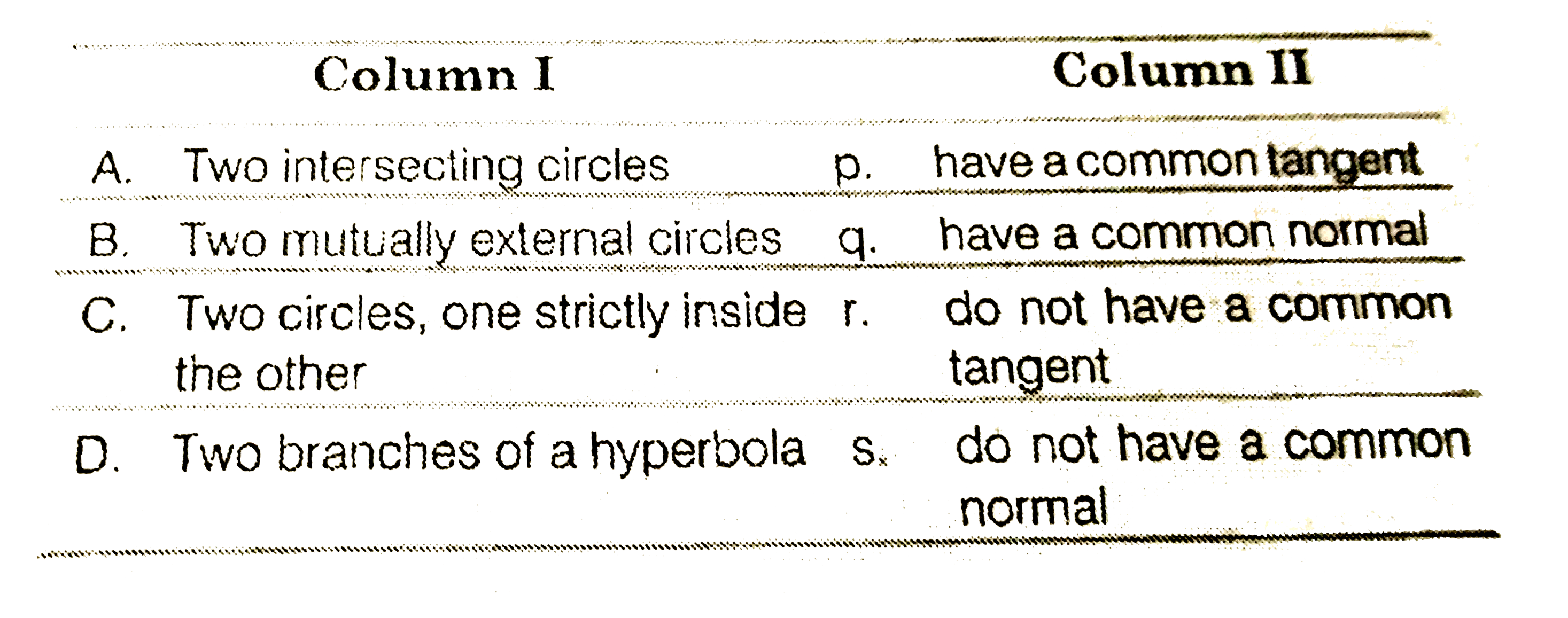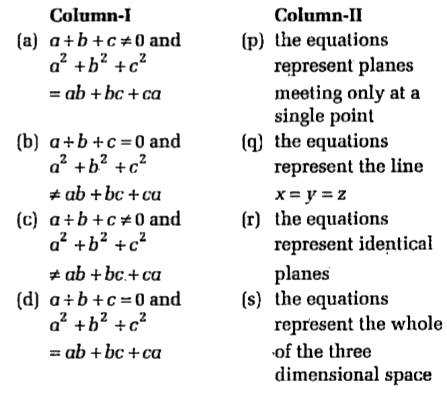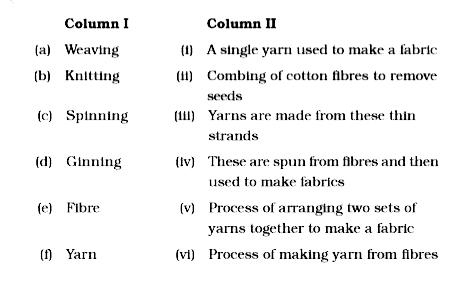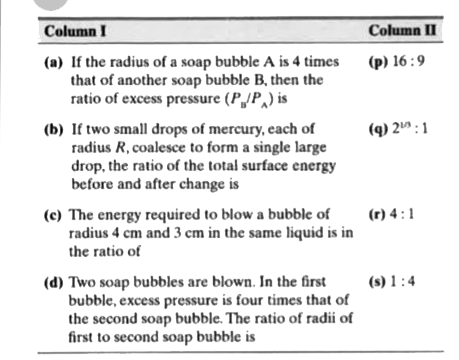Match the conditions/expressions in Column I with statement in Column II. 
The correct Answer is:A→p,q;B→p,q;C→q,r;D→q,r
(A) When two circles are intersecting they have a common normal and common tangent.
(B) Two mutually external circles have a common normal and common tangent.
(C) When one circle lies inside of other, then they have a common normal but no common tangent.
(D) Two branches of a hyperbola have a common normal but no common tangent.
Topper's Solved these Questions
- CIRCLEBook:IIT JEE PREVIOUS YEARChapter:CIRCLEExercise:Topic 2 Analytical & Descriptive Questions
Explore 2 Videos
- CIRCLEBook:IIT JEE PREVIOUS YEARChapter:CIRCLEExercise:Topic 3 Equation of Tangent, Normal and Length of Tangents
Explore 9 Videos
- CIRCLEBook:IIT JEE PREVIOUS YEARChapter:CIRCLEExercise:Topic 2 Passage Based Problems
Explore 3 Videos
- BINOMIAL THEOREMBook:IIT JEE PREVIOUS YEARChapter:BINOMIAL THEOREMExercise:Topic 2 Properties of Binomial Coefficent Objective Questions I (Only one correct option) (Analytical & Descriptive Questions )
Explore 8 Videos
- COMPLEX NUMBERSBook:IIT JEE PREVIOUS YEARChapter:COMPLEX NUMBERSExercise:TOPIC 5 DE-MOIVRES THEOREM,CUBE ROOTS AND nth ROOTS OF UNITY (INTEGER ANSWER TYPE QUESTION)
Explore 1 Video
Similar Questions
Consider the linear equations ax+by+cz=0,bx+cy+az=0andcx+ay+bz=0.
Match the conditions/expressions in Column I with statements in Column II.

View SolutionMatch the conditions/ expressions in Column I with statements in Column II.
Let the functions defined in Column I have domain (−π/2,π/2).
(##41Y_SP_MATH_C10_E02_025_Q01.png" width="80%">
View SolutionMatch the conditions/expression in Column I With statement in Column II. Normals at P,Q,R are drawn to y2=4x which intersect at (3,0). Then,
column Icolumn IIA.Area ofΔPQRp.2B.Radius of circumcircle ofΔPQRq.52C.Centroid ofΔPQRr.(52,0)D.Circumcentre ofΔPQRs.(23,0)
View SolutionMatch the conditions / expression in Column I with statement in Column II.

View SolutionMatch the conditions / expression in Column I with statement in Column II.

View SolutionMatch the conditions /expression n Column I with statement in Column II (z≠0 is a complex number )

View SolutionConsider the following linear equations
ax+by+cz=0
bx+cy+az=0
cx+ay+bz=0
Match the conditions/expressions in Column-I with statements in Column-II.

View SolutionMatch the conditions/expressions in Column I with statement in Column Ⅱ. (A). sin(π[x]) (B) sin{π(x−[x])}
View SolutionMatch the terms given in Column I with the statements given in Column II

View SolutionMatch the statements in Column I with the statements in Column II . One or more than one choice from Column II can match with a statement from Column I.

View Solution
